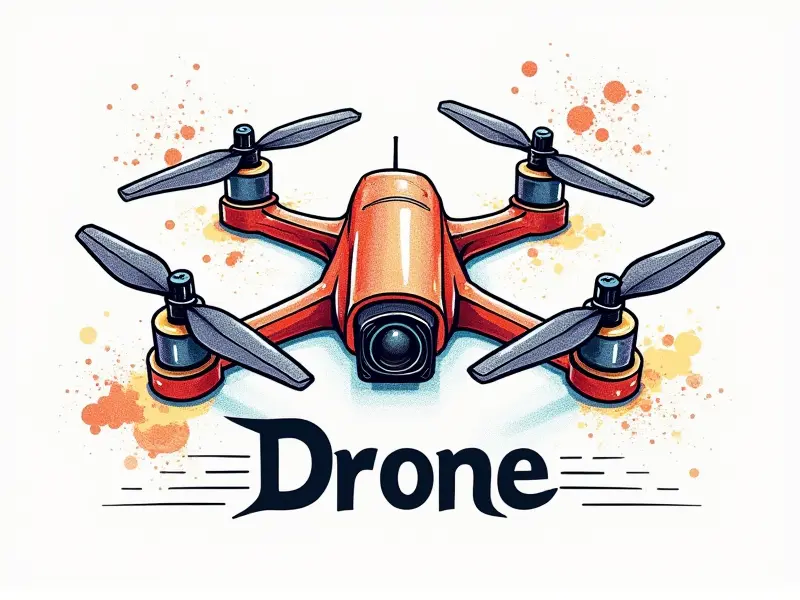FPV drone parts and functions?

Essential FPV Drone Parts Explained
First-person view (FPV) drones are a thrilling way to experience aerial photography, racing, and exploration. Understanding the essential parts of an FPV drone is crucial for both beginners and seasoned pilots alike.
Understanding FPV Drone Components
The components of an FPV drone work together seamlessly to provide a unique flying experience. From the camera and video transmitter to the flight controller, each part plays a vital role in ensuring optimal performance.
Top FPV Drone Parts You Need
- Frame: The frame is the backbone of your drone, providing structural integrity and housing all other components. Common materials include carbon fiber and aluminum.
- Motors: Motors are responsible for generating lift and thrust. Brushless motors are preferred due to their efficiency and durability.
- Propellers: Propellers convert the rotational energy from the motor into forward motion, allowing your drone to fly.
- Battery: The battery supplies power to all components of the drone. LiPo batteries are commonly used due to their high capacity and lightweight nature.
How FPV Drones Work: A Breakdown
An FPV drone operates through a complex interplay between hardware and software. Here’s how it works:
- Camera: Captures real-time video feed.
- Video Transmitter (VTX): Sends the video signal to your goggles or monitor.
- Flight Controller (FC): Manages flight dynamics and stability, using sensors like accelerometers and gyroscopes.
- Receiver: Receives control signals from your transmitter.
Key FPV Drone Components Demystified
Let’s dive deeper into the key components of an FPV drone:
Frame
The frame is designed to be lightweight yet strong, ensuring that it can withstand crashes and provide a stable platform for other parts. Common designs include quadcopters and hexacopters.
Motors & Propellers
Motors are the heart of your drone’s propulsion system. They work in conjunction with propellers to generate lift and control movement. Brushless motors offer superior performance compared to brushed motors due to their efficiency and longevity.
Battery
The battery is crucial for powering all components, especially during high-intensity activities like racing. LiPo batteries are favored for their high energy density and lightweight construction.
FPV Drone Setup Guide
Setting up your FPV drone involves several steps:
- Assemble the frame: Attach motors, ESCs (Electronic Speed Controllers), and flight controller.
- Install propellers: Ensure they are securely attached to each motor.
- Battery installation: Place the battery in a secure holder within the frame.
- Connect components: Wire up motors, ESCs, flight controller, and receiver.
Beginner's Guide to FPV Drone Parts
If you're new to FPV drones, it can be overwhelming to understand all the parts. Here’s a simplified guide for beginners:
- Frame: Choose based on your flying style (racing, photography).
- Motors & Propellers: Select high-quality motors and propellers.
- Battery: Opt for a reliable LiPo battery with sufficient capacity.
Inside an FPV Racing Drone
An FPV racing drone is designed specifically for speed and agility. Key components include:
- High-speed motors: For maximum thrust and acceleration.
- Lightweight frame: To reduce drag and increase maneuverability.
- Compact camera: For clear, unobstructed video feed.
Mastering FPV Drone Components
To master the components of an FPV drone, it’s essential to understand their individual roles and how they interact. Regular maintenance and upgrades can significantly enhance your flying experience.
FPV Drone Functions Simplified
The primary functions of an FPV drone include:
- Flying: Controlled flight using a transmitter or smartphone app.
- Video Transmission: Real-time video feed to goggles or monitor.
- Data Logging: Recording flight data for analysis and improvement.
FPV Drone Anatomy 101
Understanding the anatomy of an FPV drone can help you troubleshoot issues and optimize performance. Key areas to focus on include:
- Mechanical Components: Frame, motors, propellers.
- Electrical Components: Battery, ESCs, flight controller.
- Electronic Components: Camera, VTX, receiver.
Conclusion
Mastery of FPV drone parts and functions is essential for any pilot looking to enhance their flying experience. By understanding the components and how they work together, you can optimize your setup for better performance and enjoyment. Whether you’re a beginner or an experienced racer, knowing the ins and outs of your drone will help you achieve new heights in the world of FPV.

